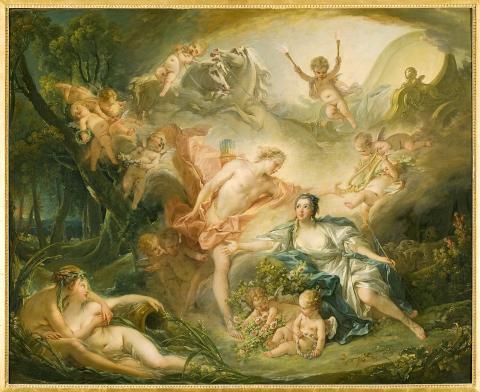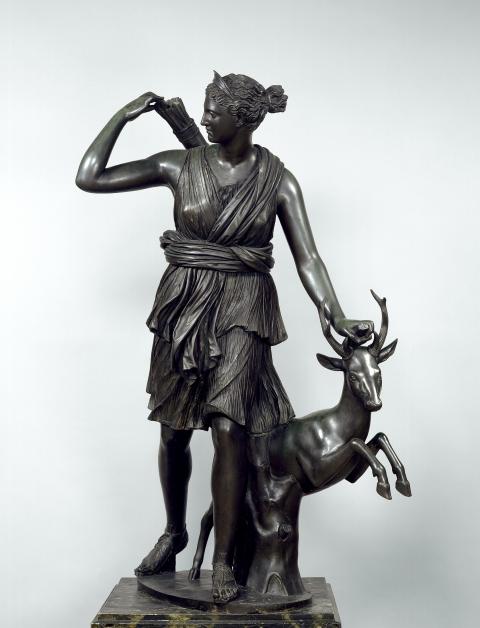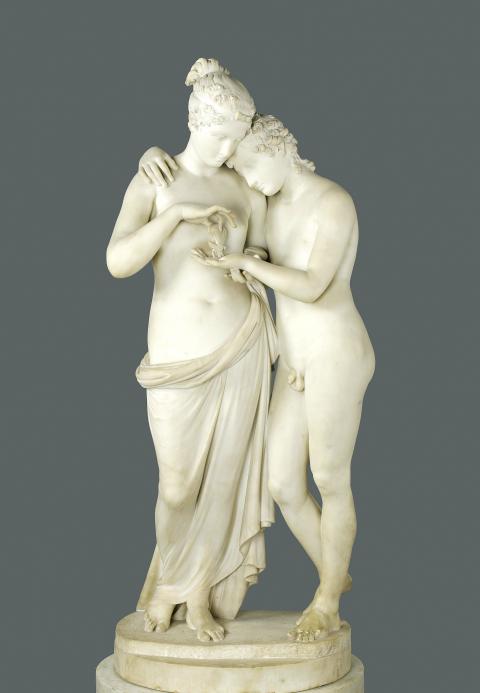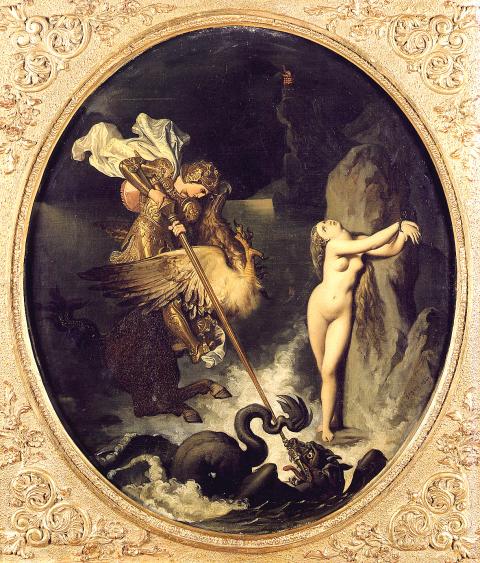The bedrock of classical Western art, Greco-Roman mythology comes to Taipei’s National Palace Museum in a new exhibition of artifacts on loan from several French museums, including the Louvre.
Many of the sculptures, paintings and murals on display in Western Mythology and Legends — A Special Exhibition From the Louvre Museum are fundamental to any introduction to the development of Western art. The works, collected together around a number of themes, provide a forum for new perspectives on these often familiar images.
This special exhibit comprises 10 prized works from the Louvre, as well as items loaned from six other French institutions: the Musee des Beaux-Arts de Tours; Musee des Beaux-Arts de Dijon; Arras, Musee des Beaux-Arts; Musee Ingres, Montauban; Roubaix, La Piscine — Musee d’Art et d’Industrie Andre Diligent; Musee National des Chateaux de Versailles et de Trianon.

Photo courtesy of Media Sphere Communications
The show confirms just how far the National Palace Museum has come as a venue for exhibitions of an international caliber.
The display area provides ample space for each individual exhibit, as befits both the level of detail and the importance of the works; extensive introductions are provided for each of the five themed sections of the show; and there is a wealth of information to take in.
It is a great boon for expatriate residents of Taipei that for this exhibition, guided tours for groups of 20 or more will be available in English (booking two weeks in advance required. For enquiries, call (02) 6630-8388). An excellent catalog and audio guide are available in Chinese.

Photo courtesy of Media Sphere Communications
The stories built around the Olympian gods, their predecessors and many children, have been popular for more than two millennia, and in that time they exerted a powerful influence on artists.
Even for those unschooled in the classics, characters such as Poseidon, lord of oceans, and Venus, goddess of love, are familiar references, and the exhibition opens a door to great tales of their many deeds.
“Mythology has molded every aspect of Western thought and has permeated our language. This is why we believe that these fascinating stories from Greco-Roman mythology and literature should be shared with Asian audiences,” Henri Loyrette, President-Director of the Louvre Museum said in a statement about the exhibition.

Photo courtesy of Media Sphere Communications
The exhibition is presented in five segments: the formation of the world, the gods of Olympus, love and lust among the gods, the age of heroes, and a concluding section showing the influence of these epics throughout Western history.
Following the stories is one way of enjoying the exhibition; another is to marvel at the transformation of Western art from the heyday of ancient Greece to the 19th century, ranging from the sedate murals from ancient Pompeii of the 12 muses to the high drama of Jean-Auguste-Dominique Ingres’ Ruggiero Rescuing Angelica.
Given the nature of much Greco-Roman mythology, there are lots of depictions of martial valor as well as erotic dalliance, and the exhibition is tangentially also an exploration of how the human body has been depicted through the ages.

Photo courtesy of Media Sphere Communications
The subtle eroticism of Artemis of the Chase stands in sharp contrast to the rococo voluptuousness of Francois Boucher’s Apollo Revealing His Divinity Before the Shepherdess Isse.
The many representations of the human form, the variety of narrative devices, the playfulness and the frank salaciousness that appear in this exhibition mean it is easy to be overwhelmed by an abundance of possibilities. But the curators have done an excellent job in giving form to the many ideas at play in these art works, and what they have created certainly warrants an extended visit.

In the March 9 edition of the Taipei Times a piece by Ninon Godefroy ran with the headine “The quiet, gentle rhythm of Taiwan.” It started with the line “Taiwan is a small, humble place. There is no Eiffel Tower, no pyramids — no singular attraction that draws the world’s attention.” I laughed out loud at that. This was out of no disrespect for the author or the piece, which made some interesting analogies and good points about how both Din Tai Fung’s and Taiwan Semiconductor Manufacturing Co’s (TSMC, 台積電) meticulous attention to detail and quality are not quite up to

April 21 to April 27 Hsieh Er’s (謝娥) political fortunes were rising fast after she got out of jail and joined the Chinese Nationalist Party (KMT) in December 1945. Not only did she hold key positions in various committees, she was elected the only woman on the Taipei City Council and headed to Nanjing in 1946 as the sole Taiwanese female representative to the National Constituent Assembly. With the support of first lady Soong May-ling (宋美齡), she started the Taipei Women’s Association and Taiwan Provincial Women’s Association, where she

Chinese Nationalist Party (KMT) Chairman Eric Chu (朱立倫) hatched a bold plan to charge forward and seize the initiative when he held a protest in front of the Taipei City Prosecutors’ Office. Though risky, because illegal, its success would help tackle at least six problems facing both himself and the KMT. What he did not see coming was Taipei Mayor Chiang Wan-an (將萬安) tripping him up out of the gate. In spite of Chu being the most consequential and successful KMT chairman since the early 2010s — arguably saving the party from financial ruin and restoring its electoral viability —

It is one of the more remarkable facts of Taiwan history that it was never occupied or claimed by any of the numerous kingdoms of southern China — Han or otherwise — that lay just across the water from it. None of their brilliant ministers ever discovered that Taiwan was a “core interest” of the state whose annexation was “inevitable.” As Paul Kua notes in an excellent monograph laying out how the Portuguese gave Taiwan the name “Formosa,” the first Europeans to express an interest in occupying Taiwan were the Spanish. Tonio Andrade in his seminal work, How Taiwan Became Chinese,